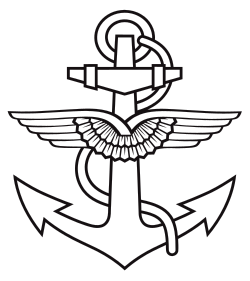Marineflieger
| Marineflieger | |
|---|---|
 Marineflieger insignia | |
| Country | |
| Branch | German Navy |
| Size | 52 aircraft |
| Garrison/HQ | Nordholz Naval Airbase |
The Marineflieger is the naval air arm of the German Navy.
History
During the First World War, naval aviators were part of the Kaiserliche Marine. Between the wars, naval aviation, the Seeflieger was absorbed by Goering's Luftwaffe in 1935. It almost came into existence when the aircraft carrier Graf Zeppelin was laid down in 1936, but lack of suitable aircraft, coupled with the reluctance of the Luftwaffe to support the Kriegsmarine in the carrier's construction, culminated in its eventual cancellation in 1943, and all anti-ship operations were transferred to the Luftwaffe shortly afterwards.
After the Second World War, it was not until West Germany's entry into NATO in the 1950s and the establishment of the Bundesmarine, that a naval aviation force (Marineflieger) was formed.
The British were largely instrumental in creation of the Marineflieger, supplying training and aircraft. A number of Royal Navy Fleet Air Arm (FAA) officers operated as part of the German Navy in the process. The first aircraft included Hawker Sea Hawks which were used by Marinefliegergeschwader 1 and 2 and Fairey Gannets. Until the new bases were ready, pilots were trained with the FAA in the UK.
Aircraft
The Marineflieger operates the following aircraft;
The Marineflieger previously operated the following aircraft;
Gallery
-
Tornado GR1 at RAF Mildenhall in 1984
-
Lynx helicopter on the flight deck of a German frigate in 1993.
-
A P-3 Orion painted a special scheme for the 100th anniversary of the Marineflieger.
-
A Westland Sea King in 2013.
-
Dornier 228 in 2013.
See also
References
External links





